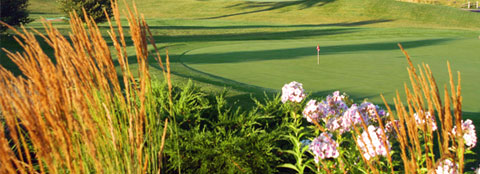Where to Use, What to Expect

Milorganite is an excellent sustainable fertilizer for turfgrass. It contains slow-release nitrogen for sustained feeding without any burn potential. Milorganite phosphorus is plant available but resistant to leaching, and the iron is non-staining.
General fertilization
Use Milorganite as a general fertilizer to promote healthy turfgrass growth, without the peaks and valleys of growth and color associated with readily soluble nitrogen. Milorganite Greens Grade is well suited for closely-mowed golf greens, and Milorganite Classic is suitable for fairways and lawns. Both have excellent physical properties, making application easy. Expect long-lasting growth and color with very little nitrogen leaching. Make monthly applications at the rate of 20 pounds per 1000 square feet, or higher rates less frequently. Milorganite is excellent in spoon feeding programs because it has a moderately low analysis, so it can be applied easily at a low rate of nitrogen.
Provide phosphorus where avoiding phosphorus leaching to adjoining waters is critical
The phosphorus in Milorganite resists leaching, yet it is plant available. Use Milorganite to correct phosphorus deficiencies that result in thin, unthrifty turf, poor rooting, and weed invasion. Expect to see improved turf density.
Provide iron where iron staining is an issue
Iron is important for turfgrass color. However, most iron fertilizers will stain concrete surfaces such as walkways, cart paths, deck areas, and markers, and the rust stains can persist for a long time. Milorganite can be used safely around concrete to provide plant-available iron without staining. Expect to see improved turfgrass color, without rust-colored speckles on concrete.
Relieve stressed turf
Milorganite is often used to improve turf color and density where poor growth and color are observed. Expect to see more dense turf with better color. Extra fertilization with Milorganite can improve turf growing on isolated regions within a fairway that has unusually sandy soil, thin soils over rock, or in places with low organic matter. Apply 20 to 50 pounds Milorganite per 1000 square feet to these areas. Milorganite often is used around bunker perimeters to improve weak turf. Use Milorganite mixed with sand (eg. 50/50 by volume) as a topdressing on thin spots on greens. Apply weekly until the turf has recovered.
Topdressing following cultivation
Milorganite mixed with topdressing sand at the rate of 10 or more pounds per cubic yard of sand will speed recovery from core aerifications or verticutting. The low-salt property of Milorganite makes it preferable to chemical fertilizers which may stress grass that already is damaged by the aerification, and Milorganite fortifies the sand topdressing with organic matter.
Filling fairway divots
Milorganite is added to sand (sometimes stained green) for use in filling fairway divots to improve turfgrass recovery.
Seeding and overseeding
When overseeding with moderate to low rates of seed, mix the seed with Milorganite to aid in seed distribution and provide a low-salt starter fertilizer. The standard Milorganite-to-seed rate is 4 to 1, by weight.
Growing new greens
In both the north and the south, for seeded and sprigged greens, Milorganite inclusion in the root zone mix (5 to 10 pounds Milorganite per cubic yard of root zone mix) has been demonstrated to provide faster grow-in.
Sodding
Fertilize with Milorganite prior to laying sod at the rate of 50 to 100 pounds per 1000 square feet on sand soils, and at half that rate for heavier textured soils. Mix 2 to 4 inches into the root zone to place nutrients where they are readily available to roots emerging from the sod. Expect to see better rooting, without fertilizer burn and root pruning, and faster establishment of the sod.
Dormant feeding
In temperate zones, Milorganite is applied in late fall, just prior to a winter snow cover. Dormant feeding research, performed at the University of Wisconsin showed that 0.16 to 0.21 lbs. of Milorganite nitrogen was mineralized per 1,000 square feet between the time of application in November and mid-March, five days after snowmelt. This proves that there are microorganisms active even under snow cover that mineralize the nitrogen in Milorganite. This winter-released nitrogen is available for uptake as soon as the soil thaws in the spring. Expect to see improved color after snowmelt, earlier recovery from snow mold damage, and improved turf damage repair from early season play.
Prior to cold fronts
In the south, warm-season grasses go dormant temporarily after cold fronts sweep through. Dormancy is encouraged by high light intensity and cold temperatures, a condition that is common when cold fronts pass through. Milorganite applied just before the cold front is well known to reduce the dormancy and off-color associated with cold fronts and even light frosts, apparently because of its black color, and the nutrition it provides. Look for improved color after the cold front.

